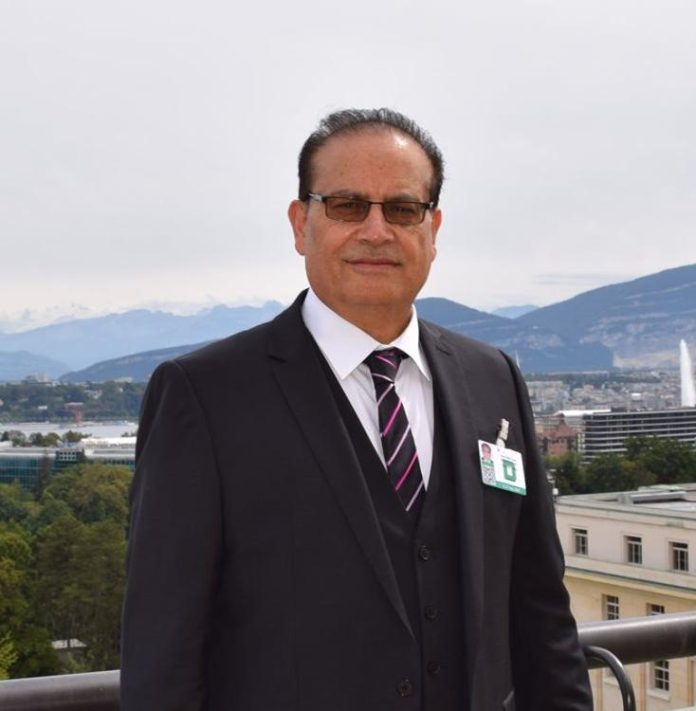By: Qamar Bashir
During martial laws and civil dictatorships, the judiciary has often been used by the executive as a potent weapon to lend legitimacy and legal cover to their political, administrative, and law-and-order objectives. This has included punishing, grilling, incarcerating, or even eliminating their declared or undeclared enemies and adversaries in politics, business, the judiciary, the executive, or the media.
However, recent efforts by the judiciary to assert its independence have seen this effective tool slipping away from the executive’s control. The usual methods of coercion, arm-twisting, intimidation, and luring judges to form compliant benches and deliver favorable decisions, particularly in highly sensitive political cases, appear to be losing their efficacy.
However, intelligence agencies, driven by their inherent nature and advanced training, are proficient in achieving their objectives through the simplest means or, as a standard operating procedure (SOP), by gradually increasing the complexity, lethality, sophistication, and effectiveness of their tools and techniques. If one method fails, they approach the objective from a different angle using more potent techniques and bringing in better and more experienced human resources. They will continue these efforts until they are either directed by their command to stand down, the target succeeds in eliminating them, or the target is eliminated.
At this point in time, there are significant stakes for the supra executive that can only be safeguarded with a compliant judiciary at all levels. These stakes include tainted elections and the formation of the government based on Form 47. If candidates who claim to have won the elections succeed in convincing independent election tribunals or the higher judiciary that the current government lacks legitimacy due to rigged Form 47s, then the government, allegedly put together by the supra executive with considerable effort and engineering, would collapse like a house of cards.
The second major stake is that handpicked non-political elements currently run major and sensitive ministries, departments, and bodies like PTA, NADRA, the Accountability Bureau, and SIFC. These individuals control, manage, and implement all important policy, strategic, and tactical decisions of the supra executive.
This also includes the Ministry of Finance, which holds the country’s financial resources. The ministry has the power to either strangle any policy, department, agency, or institution by depriving it of financial liquidity, or to nurture, promote, expand, or strengthen others by providing financial support.
The Ministry of Interior is also involved, manipulating the police and security agencies to update the software of political elements considered hostile to the supra executive. This ministry implements the narrative to impart exemplary punishment to political leaders, workers, supporters, abettors, masterminds, and facilitators of the events of May 9.
In this background the problem statement for the supra executive is how to bring the judiciary back under tight control to save the current government and retain the ability to make vital and far-reaching decisions that it believes are in the best interest of the army, the people, and the country.
The options before the supra executive are many. It can continue to intensify direct pressure on judges, using threats, harassment, and surveillance and targeting judges’ families and exploiting vulnerabilities. But it also knows that, if this action backfired, it would further alienate the judiciary and strengthen their resolve for independence, besides risking significant public and international backlash.
The next indirect option is to influence the appointment of judges sympathetic to their interests through legal and administrative channels by leveraging existing political connections to appoint or promote judges who are more likely to align with its objectives. This approach however risks undermining the judiciary’s overall credibility and could provoke resistance from the legal community and civil society.
It might use its clout in the parliament and the government to offer financial incentives, career advancements, or other perks to judges in exchange for favorable rulings such as promises of high-profile positions post-retirement. The fallout of this strategy could erode judicial integrity and lead to long-term damage to the rule of law, besides exposing it to vigilant media or whistleblowers, leading to scandals.
It might use legislative and executive to undermine judicial independence indirectly by fostering where judicial decisions can be overridden or ignored by executive orders. The weakness of this approach is that it could destabilize the democratic process, leading to political unrest and weakening public trust in state institutions.
It can launch media campaigns to discredit independent judges and portray them as biased or corrupt and utilizing the state-controlled media to shape public opinion against the judiciary. The fallout of this strategy could cause a backlash if the public perceives it as overt propaganda. It can also rally civil society and international observers to support judicial independence.
It might create factions within the judiciary by aligning with judges who have similar ideological stances or grievances against independent judges by promoting internal division to weaken overall judicial solidarity. This strategy may create short-term advantages but risks long-term instability within the judiciary, compromising its ability to function effectively and cohesively.
Out of all these scenarios, the best possible option is to enhance its evidence-gathering capabilities to build stronger cases against individuals or entities. This includes cultivating highly effective lawyers, working closely with witnesses, and ensuring robust legal arguments. Additionally, they might employ intimidation tactics to deter victims or subjects from approaching the judiciary by threatening dire consequences. The implication of this approach may improve legal strategies leading to more successful prosecutions and minimum resistance from legal and human rights communities.
In this critical period, the judiciary’s resistance to executive control represents a significant shift towards asserting judicial independence in Pakistan. Any approach by the supra executive to regain influence must be carefully considered, as it carries the risk of exacerbating tensions and undermining the very fabric of Pakistan’s legal and political systems.
By: Qamar Bashir
Former Press Secretary to the President
Former Press Minister to the Embassy of Pakistan to France
Former MD, SRBC

















